Welcome to our comprehensive guide on how to propagate begonias! Whether you’re a beginner or an experienced gardener, this article will provide step-by-step instructions and valuable tips for successfully propagating these beautiful plants in four different ways.
4 Types of Indoor Begonias
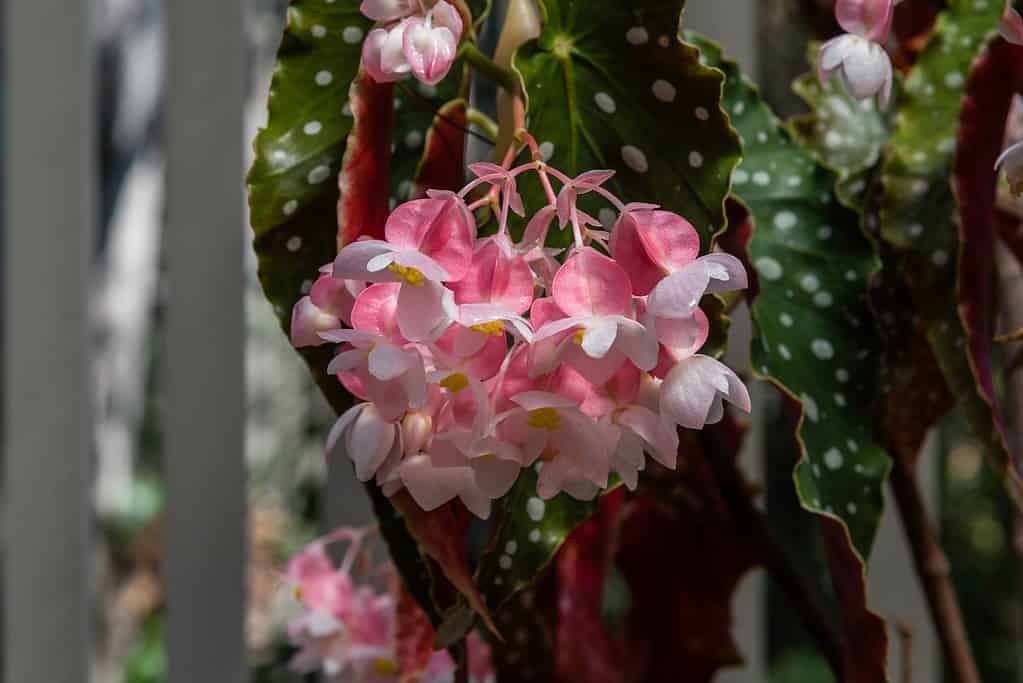
Did you know that cane begonias will flower almost all year long indoors with proper lighting?
©akrassel/iStock via Getty Images
There are many different types of Begonias! In fact, there are 1,900 species and 10,000 different cultivars. And the best news is they are all easy to propagate. The most common types of begonias that people grow indoors as houseplants are fibrous-rooted begonias, cane begonias, rhizomatous begonias, and semi-tuberous begonias. We will go over how to propagate each of these types of begonias today.
1. Fibrous-Rooted Begonias
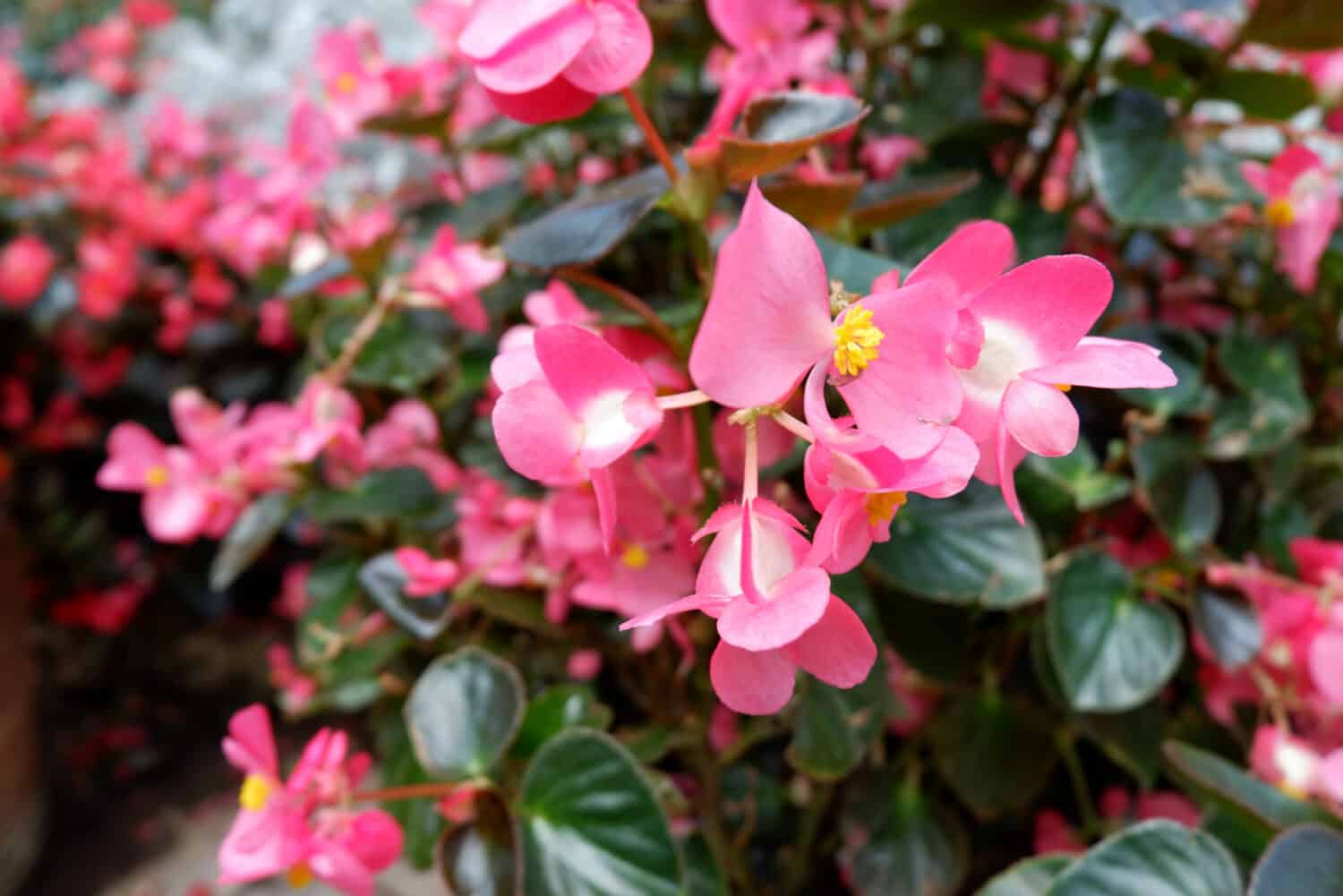
The Ambassador series of begonias are fibrous-rooted begonias that grow well indoors.
©NATTANAN KLOENPRATHOM/Shutterstock.com
Fibrous-rooted begonias are a type of flowering plant with distinctively ovular and narrow leaves. People grow these begonias for their gorgeous flowers, shrub-like stems, and striking foliage. They come in a range of colors, from bright shades of pink, red, and orange to more subtle pastel shades. The flowers of fibrous-rooted begonias are usually white or yellow and have five petals. The two most common varieties of fibrous-rooted begonias are Begonia scharffii and Begonia ‘Cotton Candy.’
2. Cane Begonias
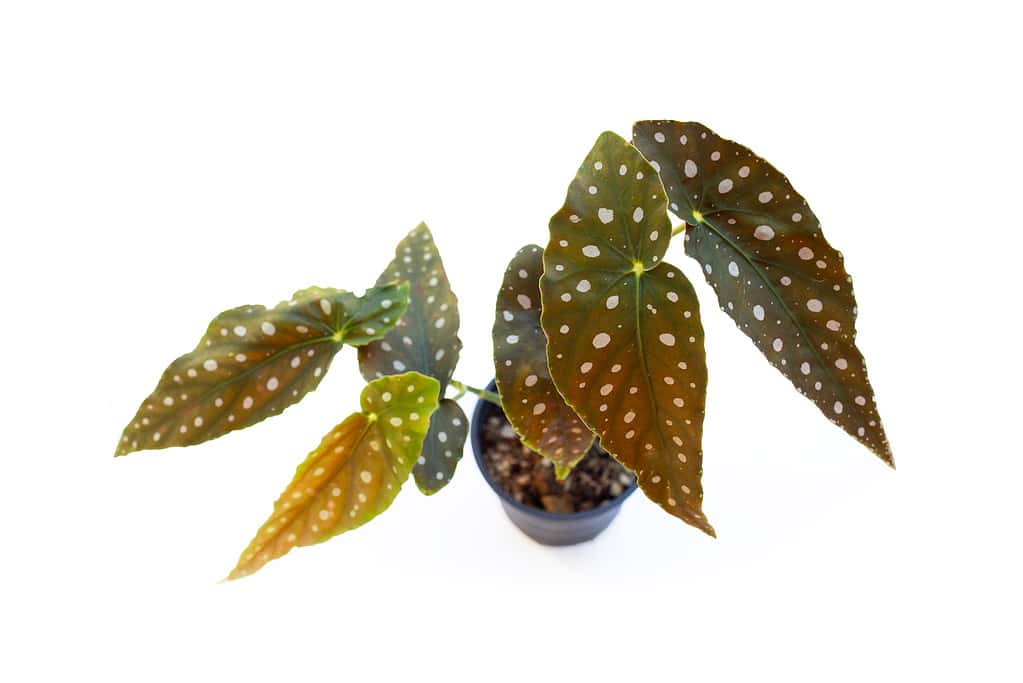
Begonia maculata is a very popular type of cane begonia.
©Bowonpat Sakaew/iStock via Getty Images
Cane begonias are an interesting and unusual variety of begonias. They have large cane-like stems with leaves that are often deeply divided and slightly fuzzy. The leaves are often shaped like angel wings, and many have polka dots. The flowers are usually small and come in shades of pink, red, and white. This type of begonia also has fibrous roots, but it also has woody stems that grow like a tall cane. With enough light, this variety will bloom nearly all year long. The most common varieties of cane begonias are Begonia stipulata, Begonia Lucerna, and Begonia maculata.
3. Rhizomatous Begonias
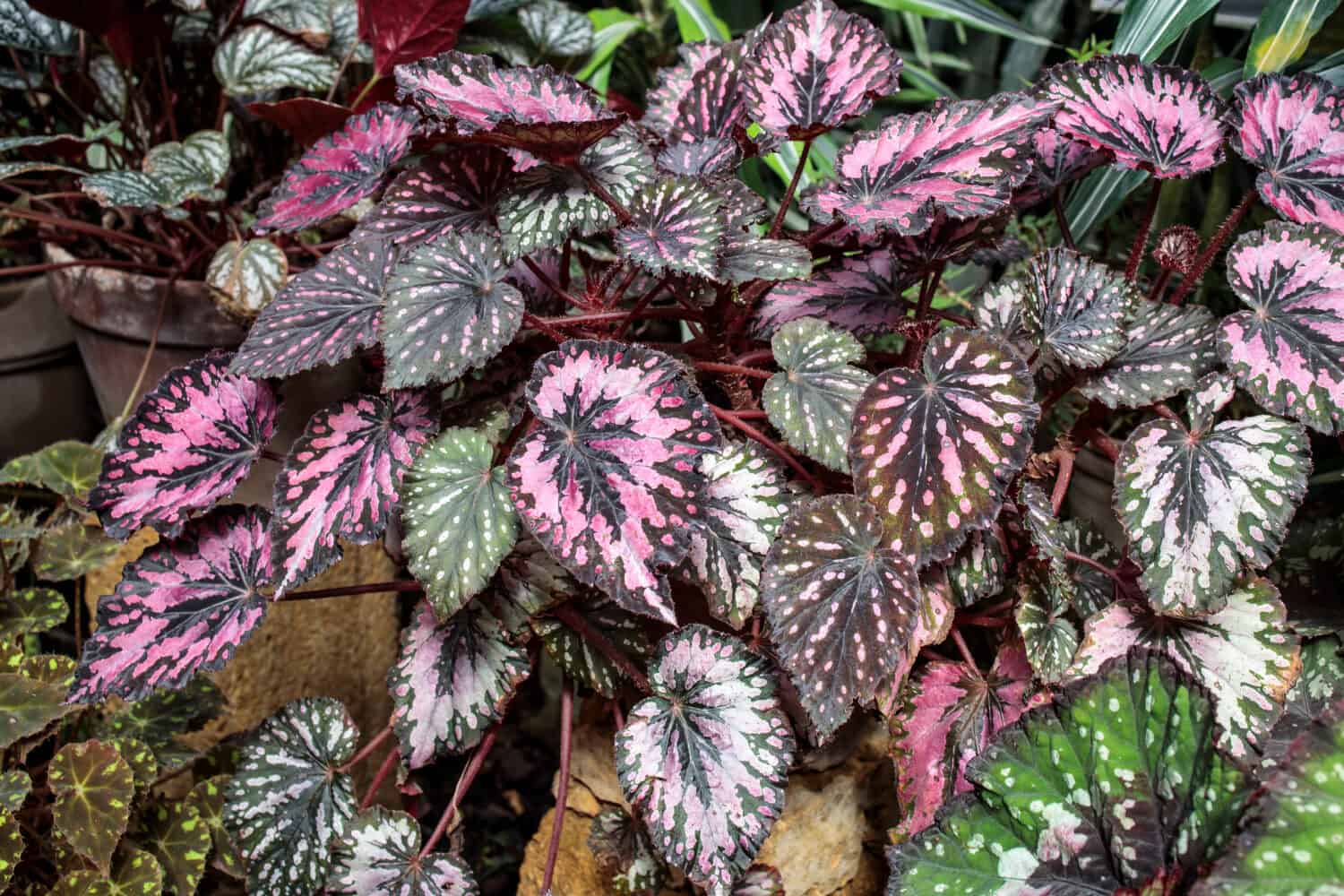
Begonia rex has silvery purple leaves that are easy to propagate.
©Elena Rostunova/Shutterstock.com
Rhizomatous begonias are a type of begonia with thick and fleshy rhizomes. They grow along a root that creeps along slowly underground. Outdoors, they will spread into a ground cover. The leaves are usually round or heart-shaped and come in a range of colors, from dark green to shades of purple and yellow. The flowers of rhizomatous begonias are usually pink or white and have five petals. Popular varieties of rhizomatous begonias are Begonia rex and Begonia masoniana.
4. Semi-Tuberous Begonias

Begonia dregei is a short-lived plant. If you learn how to propagate begonias, you can renew your supply.
©Tatiana Buzmakova/iStock via Getty Images
Semi-tuberous begonias are a type of begonia with tuberous roots and thick stems. This is the begonia you are most likely to see at a florist shop. Florists love them for their winter-blooming flowers. They are short-lived plants, so understanding how to propagate them is essential. The leaves of semi-tuberous begonias are oval-shaped and often come in a range of colors, from green to purple and yellow. The flowers of semi-tuberous begonias are usually white or yellow and have five petals. Popular types of semi-tuberous begonias are Begonia x hiemalis ‘Solenia Range’ and begonia dregei.
How to Propagate Begonias by Leaf Tip Cuttings
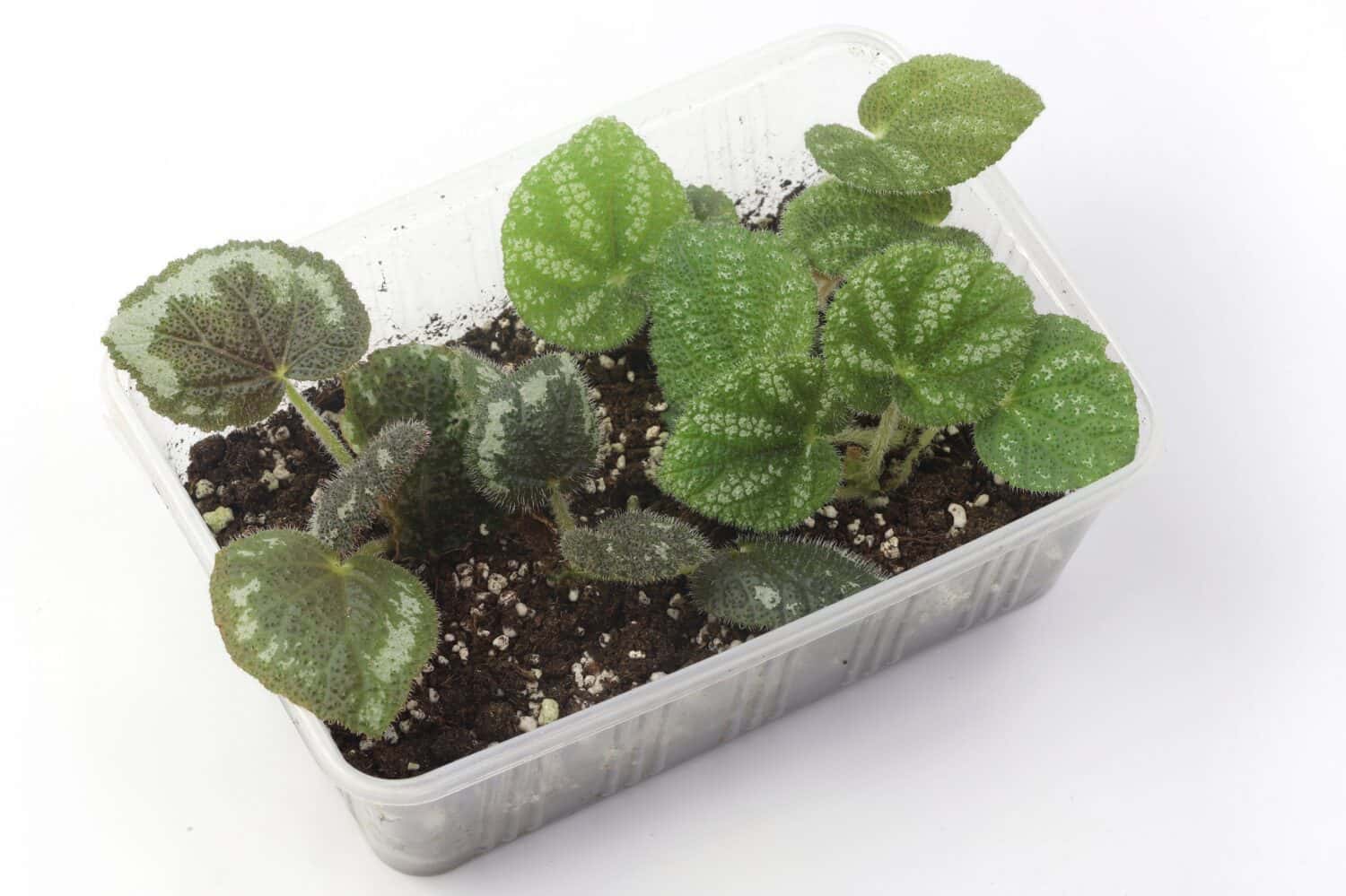
You can take a cutting of a leaf and petiole to grow a new begonia.
©Wanida_Sri/Shutterstock.com
Leaf cuttings, or tip cuttings, are one of the easiest ways to propagate any type of begonia. This method uses the leaf and the petiole together.
- Gather a few healthy leaves from a begonia plant. Select mature stems, but not ones that are woody or fibrous. Delicate new growth will likely rot.
- Trim the bottom of the stem to a point. Leave 1-2 inches of stem attached to the leaf.
- Optional: Dip the end of the stem into a rooting hormone.
- Place the leaves in a shallow pot filled with moist seed starting mix. Push the stem into the soil, burying the petiole but not the leaf. The petiole is the piece of the stem that connects to the leaf; let it touch the soil.
- Place the pot in a warm, bright location but out of direct sunlight.
- Water the soil if it dries out.
- Optional: Cover the pot with a plastic bag, making sure that the bag does not touch the leaves. If you can’t water often, this is a good way to keep the soil moist. Don’t crimp the plastic down too tightly. Let some air flow in.
- Check the soil every few days to make sure it stays moist but not soggy.
- Once roots form, you will see tiny begonia plants emerging from the center of the leaf. New begonia leaves will grow out from the area where the petiole of the leaf touched the soil.
- Carefully place these delicate new plantlets in their own container with begonia potting soil and place them in bright, indirect light.
How to Propagate Begonias by Whole Leaves
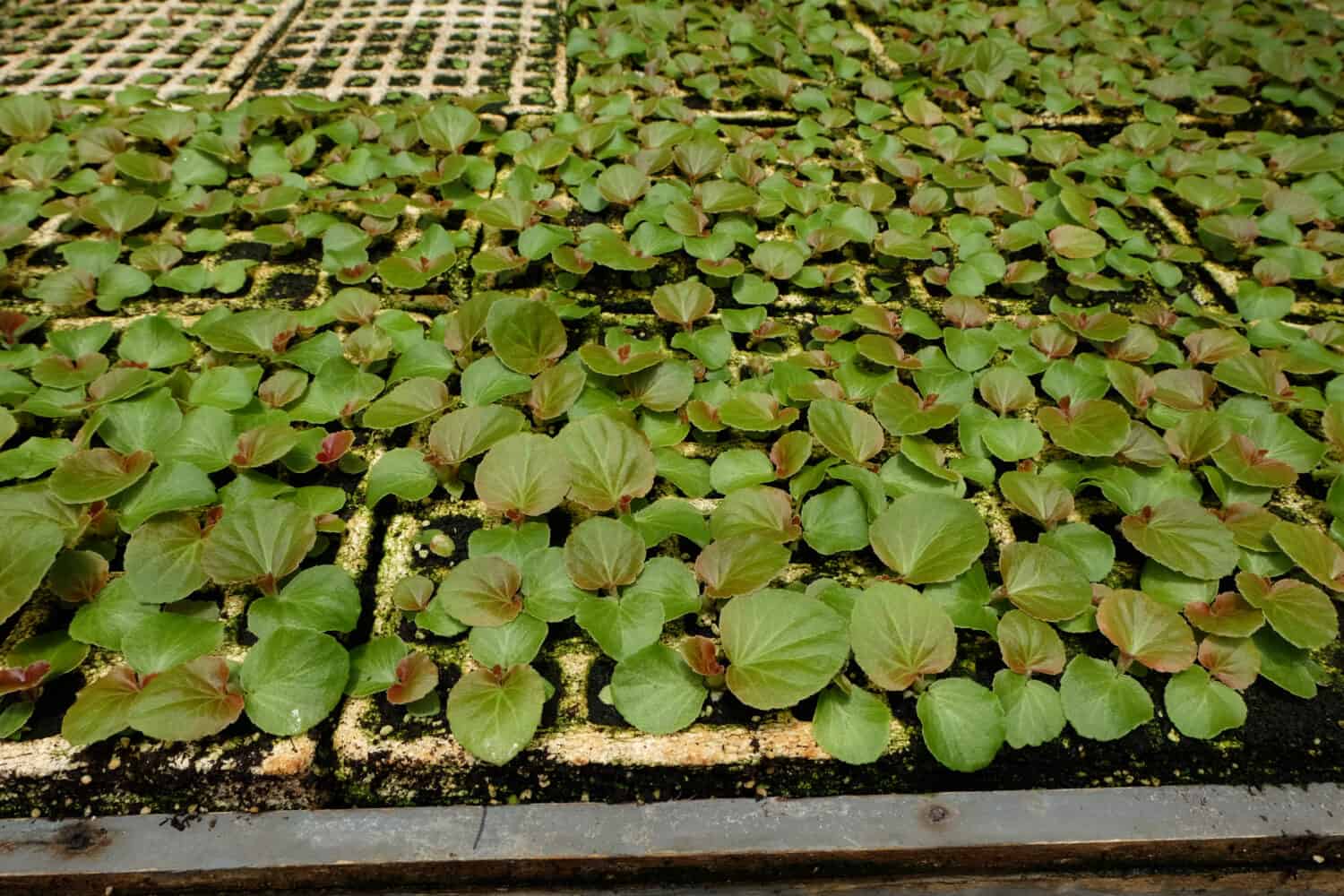
Commercial growers use the leaf propagation method because the baby plants are exact copies of the original.
©Pashphat Puangsombat/Shutterstock.com
This propagation method is very useful for rhizomatous begonias because they don’t have a long stem. Instead, you can propagate with only a leaf, without the petiole. This will also work with the other types of indoor begonias. One major benefit of this method is that the baby plants are exact copies of the mother, so you can pass along beautiful foliage or flowers with certainty.
- Cut a young leaf off of the plant and trim off the entire stem.
- Turn the leaf over so you are looking at the back of it. Make small razor cuts along the main veins of the leaf.
- Fill a shallow container with moist seed starting mix.
- Use small u-pins to hold the leaf (cut side down) to the soil. Some people have also used tiny pebbles with good success.
- Keep the tray moist and warm, and place it in bright, indirect light.
- You can use plastic or a domed transparent lid to keep the soil wet.
- After 7-14 days, you will notice young plants forming at the base of each of the cuts that you made right along the vein.
- You can transplant all of these cuttings into one container together for a bushy plant. Or you can separate the plantlets and pot them each in their own pot.
How to Propagate Begonias by Leaf Sections
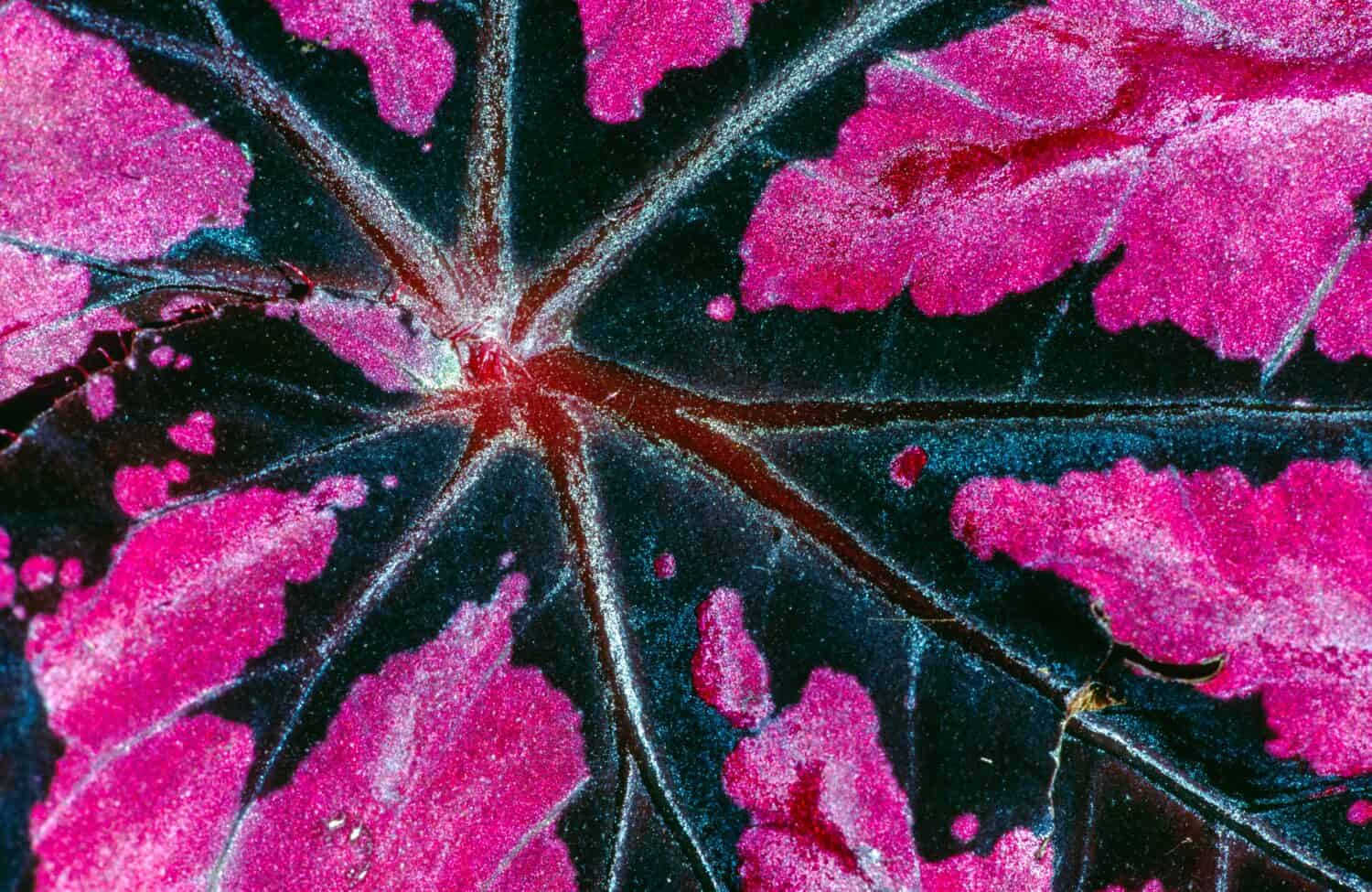
To propagate vegetatively, cut the leaf into triangles, leaving a portion of the vein in each section.
©Frank Wagner/Shutterstock.com
This is a very fast way to get many begonias quickly. If you love a large quantity of free plants, this method is for you. With this method, you will create identical clones of the mother plant with no variation, which is often desirable.
- Cut a young leaf that is fully grown and open.
- Cut the leaf into small triangular pieces about 2 inches in size. Be sure that you leave a primary vein at the very tip of each triangle. This part will go into the soil.
- Fill a shallow tray with moist seed starting mix. 2 inches of soil is plenty.
- Place each leaf section into the soil with the tip down. You want the tip with the vein to point downward into the soil 1/2 an inch and the rest of the leaf to be above ground so it doesn’t rot.
- Use a domed plastic lid or tented plastic wrap to keep the soil moist.
- In 21-30 days, you will see tiny plantlets forming at the base of each leaf section. The new plants will grow directly out of the primary vein of each cutting.
How to Propagate Begonias in Water

Cane begonias are very easy to propagate. Just submerge the cane and nodes under water, and they will root.
©SGuillory/Shutterstock.com
- Gather the following materials:
- Begonia cutting
- Water
- Jar or glass
- Cut a healthy piece of Begonia stem and make sure it has at least one healthy leaf. If you are working with a type of begonia that has nodes along the stem, cut below the node. Rhizomatous begonias will grow roots at the petiole, so cut below that.
- Cut the stem at a 45-degree angle just below a leaf node. The leaf node is the small bump where leaves and stems connect.
- Place the cutting in a jar or glass full of room-temperature water.
- Place the jar or glass in a spot that receives indirect sunlight, such as near a window.
- Change the water every 2-3 days to keep it fresh.
- After 4-6 weeks, the cutting should have developed roots.
- Once the roots are 2 inches long, you can transplant the baby begonia into its own plant with fresh potting soil.
The photo featured at the top of this post is © soniabonet/iStock via Getty Images
Thank you for reading! Have some feedback for us? Contact the AZ Animals editorial team.







